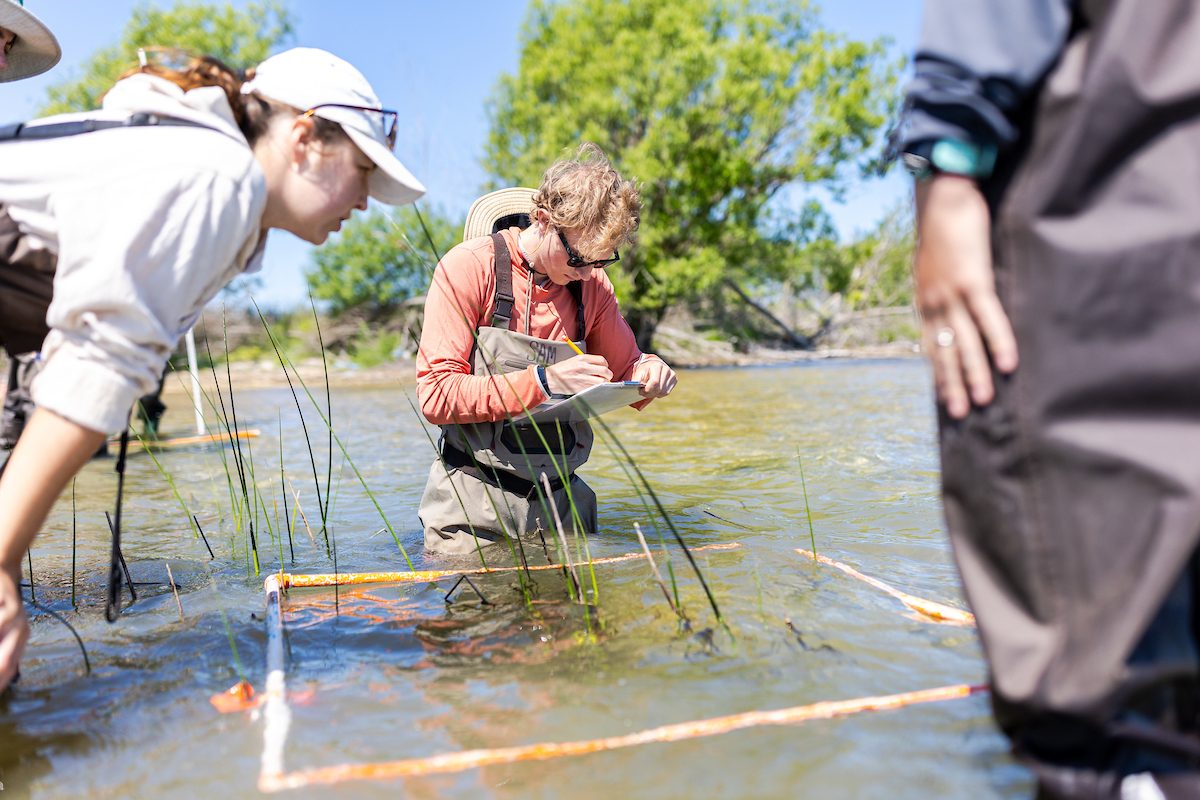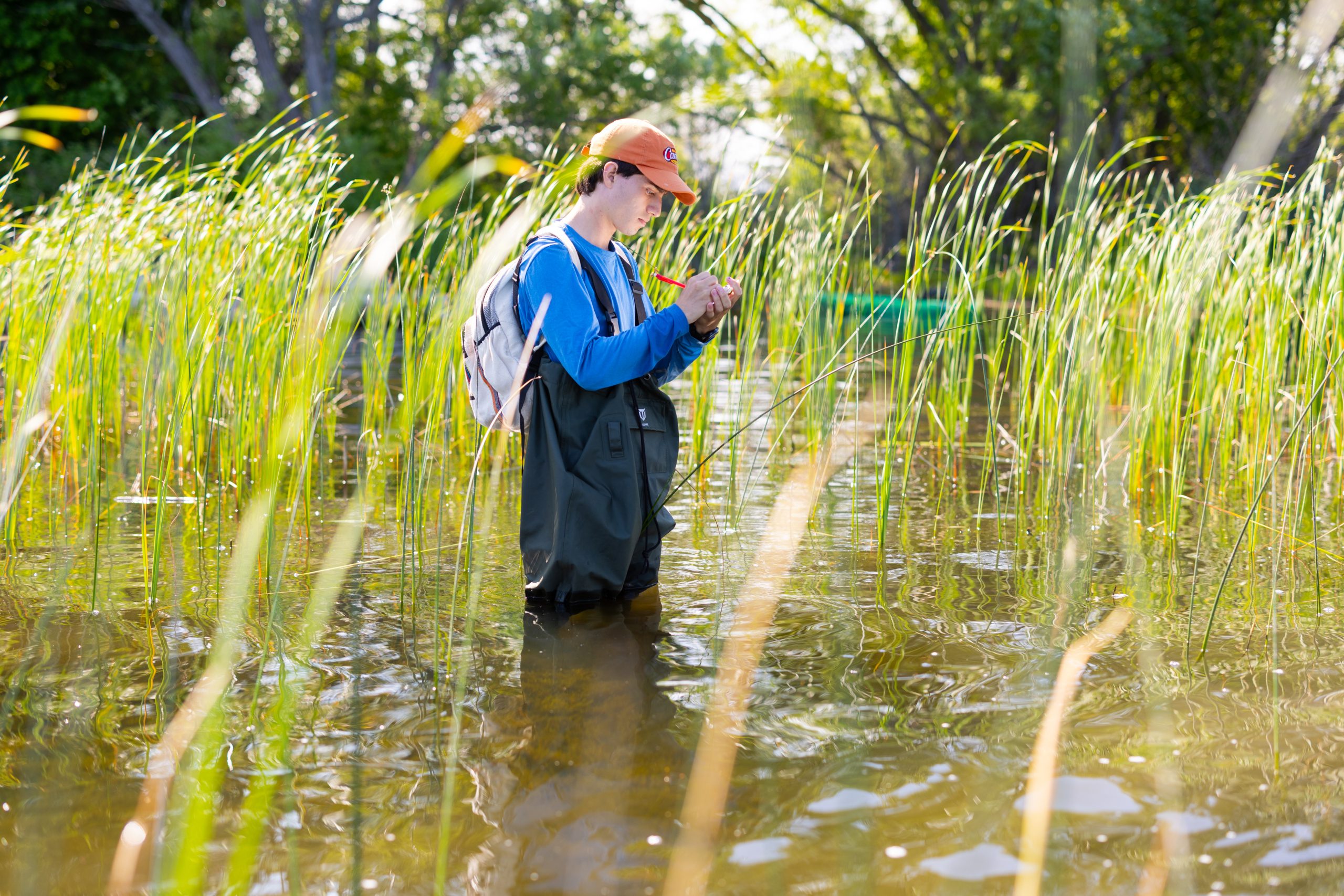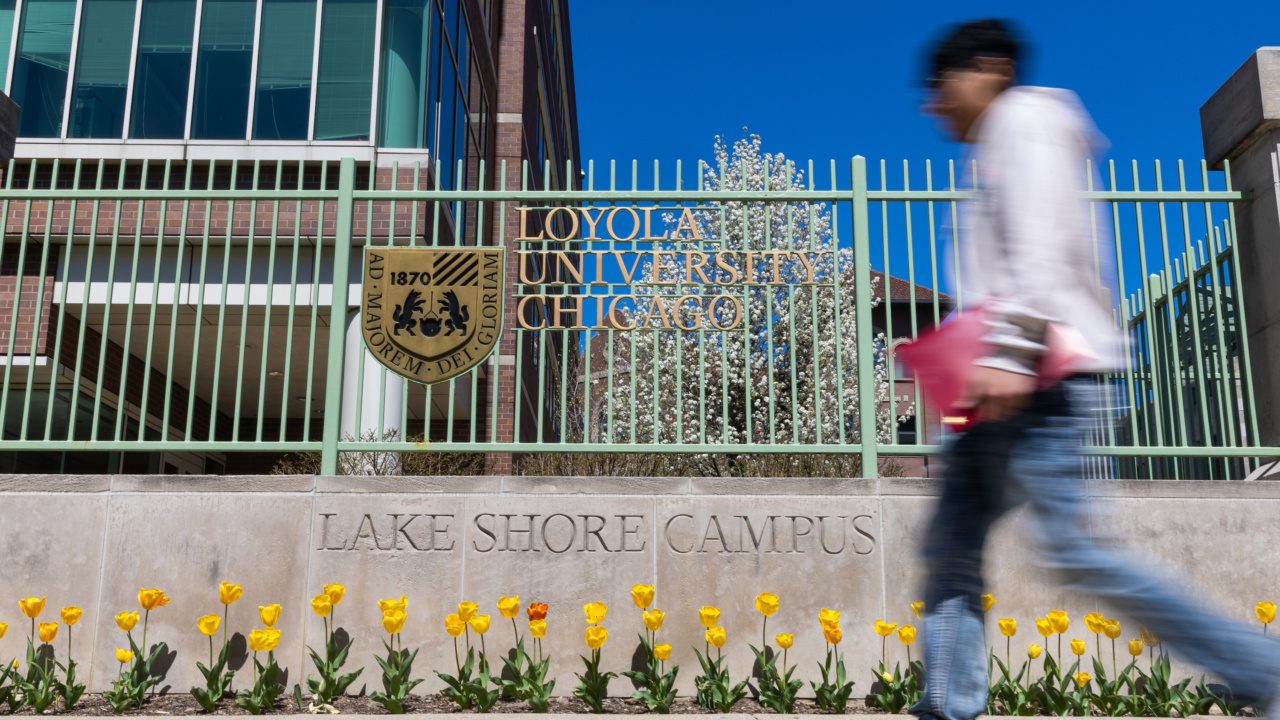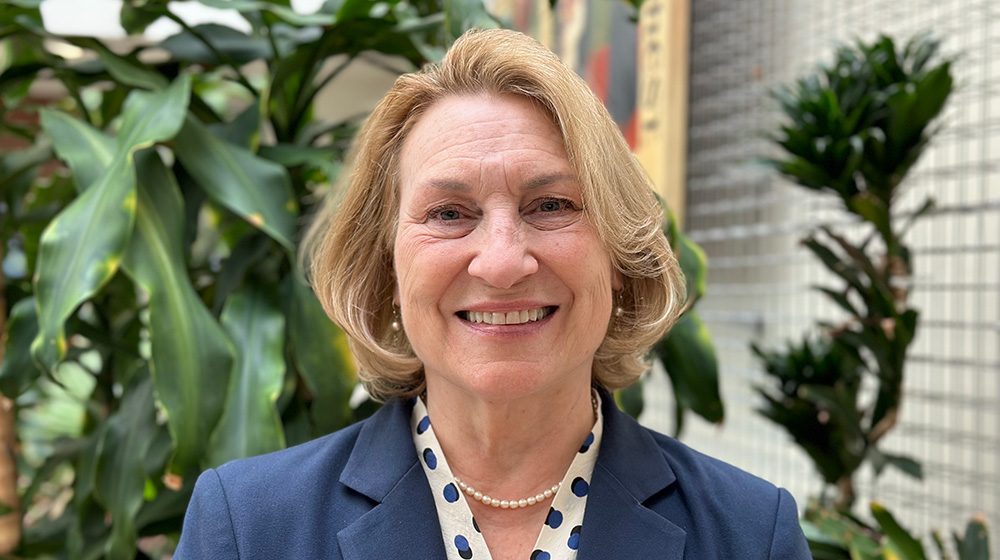Meet the students restoring biodiverse wetlands in the Great Lakes region

At the northern tip of Michigan’s lower peninsula, researchers from Loyola University Chicago’s School of Environmental Sustainability (SES) are devising new methods of restoring high-quality, biologically diverse wetlands.
Assistant Professor Brian Ohsowski and Research Associate Shane Lishawa lead Team Typha, a research group focused on combating invasive plants that disrupt wetland ecosystems and crowd out native species. The researchers aim to develop a scalable management strategy to restore high-quality habitats for birds, fish, and other wildlife.
They recently received more than $1.1 million in federal funding for a large-scale project that could inform wetland management practices throughout the Great Lakes region.
The project, funded through the Great Lakes Restoration Initiative (GLRI), is the latest development in work that started more than 20 years ago. At that time, Nancy Tuchman, founding dean of SES, was an associate professor in Loyola’s Department of Biology. Tuchman led a research team based at the University of Michigan Biological Station in northern Michigan, 24 miles south of the Mackinac Bridge. She and her master’s degree students had noticed that a new, aggressive cattail hybrid was taking over nearby Cheboygan Marsh.
Taking on Typha
Typha × glauca (Typha) is a cross between a non-native cattail and a native species. The hybrid plant tolerates a wide range of conditions and proliferates rapidly. As a result, dense stands of the large cattails, reaching more than 10 feet tall, can quickly dominate a marsh ecosystem. Typha also leaves a tremendous amount of leaf litter, which builds up over the years. Tuchman’s research revealed that the accumulating biomass was driving changes in the physical structure of wetlands to the detriment of native plants and animals.
Both Lishawa and Ohsowski first met Tuchman when they were working and studying at the Michigan Biological Station—Lishawa in 1999 when he was an undergraduate at the University of Michigan, and Ohsowski in 2005 as a graduate student at Eastern Michigan University.
Lishawa went on to earn his master’s degree in forest ecology from the University of Vermont. He returned to field research in Michigan as a Loyola research associate in 2008. Building on Tuchman’s research, Lishawa started exploring strategies for managing Typha. He conducted a small-scale experiment removing cattails and leaf litter in randomly selected one-meter-square plots in a Typha-dominated wetland.
“A year later, we came back and looked at the response in the plots, and we found a bunch of native plants sprouting. So that was encouraging, but it was super small scale,” says Lishawa.

Dramatic Results
That initial research provided the data needed to win funding for more extensive experiments. In 2010, Lishawa and Tuchman received the team’s first GLRI grant. With that support, they ran tests at multiple sites and experimented with several techniques for battling invasive cattails. In one approach, the team removed the entire Typha plant, including the below-ground rhizomes. This method produced dramatic results.
“It was just amazing,” says Lishawa. “The first time I went into one of these plots, we had a garden of native plants sprouting from this place where we’d removed the cattails.”
Results from these first large-scale studies led to a second Lishawa and Tuchman GLRI grant in 2013. With that grant, they bought a mechanical harvester and experimented with cutting the cattails above the water level in 60-by-60-meter plots. This approach was less effective than physically removing the entire plant, including the underground rhizome. However, digging up the rhizomes was prohibitively labor-intensive, so they tried another strategy.
To test another approach, the researchers bought equipment that cuts the Typha below the water level. Multi-year experiments showed that this method was effective in restoring plant diversity, and because they used a mechanical harvester, it had the potential for large-scale application.
At this stage, Lishawa connected with Eric Dunton from the U.S. Fish and Wildlife Service (FWS).
Dunton is the wildlife biologist for the Shiawassee National Wildlife Refuge near Saginaw, Michigan. In collaboration with Dunton, Lishawa tried below-water cutting in sections of Shiawassee dominated by invasive cattails and studied how the native plants responded. The experiment confirmed the benefits of this method, and the work continued to expand from there.
Ohsowski joined the Loyola faculty in 2015 after completing a PhD in biology at the University of British Columbia. He and Lishawa soon joined forces as leaders of Team Typha. Together, they won additional funding, hired more student research assistants, and purchased equipment that allows for larger projects, including more projects with the Fish and Wildlife Service.
"The students here...were covered in mud. ...They all had these ridiculous laughs and big smiles. And I thought, ‘You’re finding your calling.’"
— Brian Ohsowski , assistant professor, School of Environmental Sustainability
As the scale of the work grew, the team needed to find a beneficial use for the biomass they collected while cutting the cattails. Ohsowski is interested in biochar, which sparked an idea for a solution.
Biochar is a charcoal-like substance produced by heating organic materials in an oxygen-free environment. Without oxygen, the material burns clean and forms a carbon-rich final product rather than releasing carbon into the atmosphere. Biochar is known to chemically bind vital plant nutrients such as nitrates and phosphates—a quality that could be valuable for reducing the spread of Typha invasions.
Runoff from farm fields increases nutrient availability in wetlands, creating conditions ideal for nutrient-hungry Typha. Applying biochar to invaded wetlands could reduce nutrient availability and improve water quality for native plants that thrive under less nutrient-rich conditions.
Team Typha has done small-scale projects using biochar in wetlands, and the results have been promising.
The group incorporated this idea into a proposal for a large-scale experiment at the Shiawassee National Wildlife Refuge. They proposed harvesting Typha in large sections of the refuge, converting the cut plant material into biochar on-site, and applying it to the wetlands to test the possible benefits. In addition to its potential for restoring biodiversity, this strategy has advantages related to climate change. Biochar is a carbon-rich material that is resistant to microbial and physical breakdown in soil for hundreds of years. Furthermore, creating biochar on-site cuts transportation-related emissions.
This summer, Team Typha secured more than $1.1 million in GLRI funding for the Shiawassee project. The research team will test Typha harvesting and biochar treatments separately and in various combinations in large plots to learn which methods or combination of methods work best.
Sustainable Science
Shiawassee is a former agricultural site, so the team will also seed native plants to help restore biodiversity. They will study the results over multiple years and take what they learn to land management agencies throughout the Great Lakes region. The large size of the project will help demonstrate that their management techniques can work in the long term and at scale.
Ohsowski and Lishawa stress that education is also central to their work. Student research assistants support fieldwork and help in the lab on campus. However, the primary reason for involving students is to provide a rich learning experience. Students working with Team Typha develop valuable research skills and gain hands-on experience, and the faculty members encourage them to pursue their own projects. The work prepares them for careers as independent researchers.
For Ohsowski, the best part of the job is seeing students grow, develop as scientists, and discover work that brings them joy and meaning. He says the fieldwork in Michigan fosters these types of learning experiences.
“The students here, everyone in the field today, they were covered in mud,” he said. “They drew on their faces with mud, and they all had these ridiculous cackling laughs and big smiles. And I thought, you’re finding your calling.”
Team Typha has a big job ahead with their Shiawassee research project. They anticipate generating new knowledge to inform regional restoration practices, and Ohsowski and Lishawa look forward to helping to launch the careers of future generations of researchers and environmental leaders.
Read more stories from the School of Environmental Sustainability.

